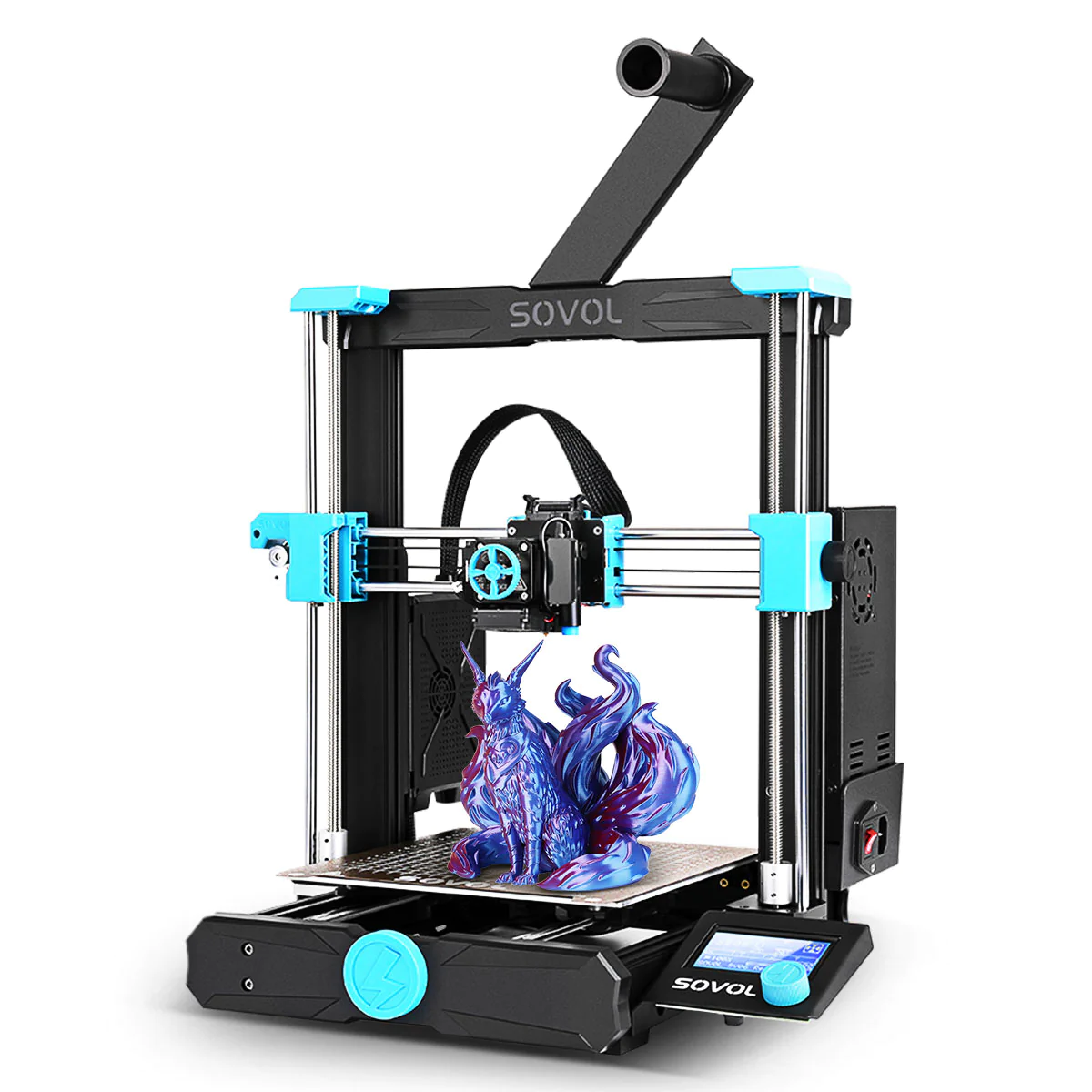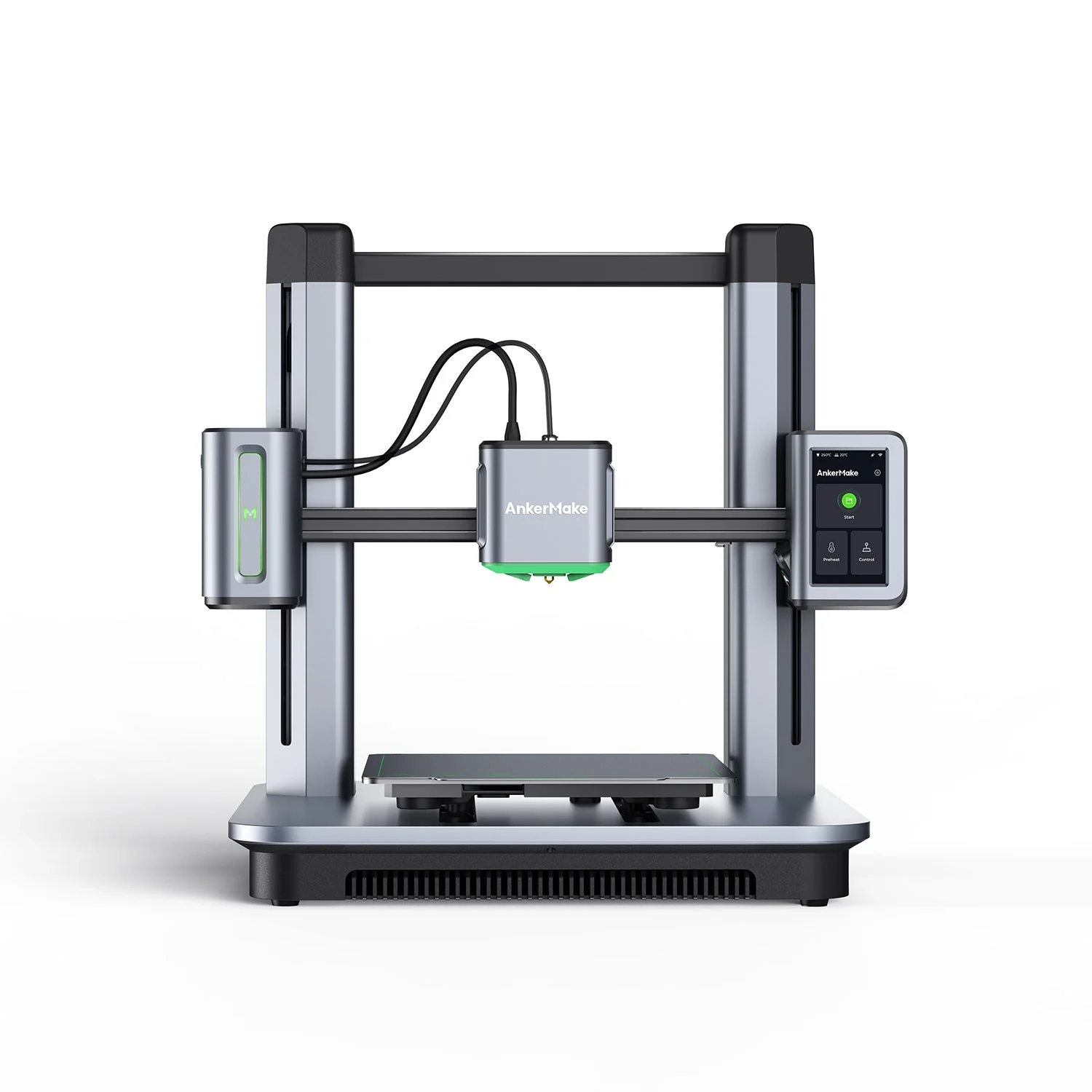Compare SV06 vs M5
Comparison between the best 3D printers
Choose the best 3D printer at the best price. The cheapest 3D printers are here.
Buy a 3D printer here with 3D Fila.
 |
 |
|
| Model | SV06 |
M5 |
| Printing Material | Filament | Filament |
| Buy Filament for Sovol SV06 | Buy Filament forAnkerMake M5 | |
| Estimated price | $259,00 | $497,00 |
| Manufacturer | Sovol | AnkerMake |
| Release Year | 2022 | 2023 |
| Print Volume [mm] | 220x220x250 | 235x235x250 |
| Printer Size [mm] | 497x388x610 | 502x438x470 |
| Weight [kg] | 9 | 12,6 |
| Power Loss Recovery | YES | YES |
| Enclosed printer | NO | NO |
| Bed Leveling | Automatic | Automatic |
| Filament End Sensor | NO | YES |
| Bed type | Heated | Heated |
| Power supply system | Direct Drive | Direct Drive |
| Standard nozzle | 0,4 | 0,4 |
| Maximum Nozzle Temperature [°C] | 300 | 260 |
| Maximum Bed Temperature [°C] | 100 | 100 |
| Maximum printing speed [mm/s] | 80 | 500 |
| Filament holder | NO | YES |
| Camera for supervision | NO | NO |
| Recommended filaments | PLA, PETG, Tritan, Flex, ABS | PLA, PETG, ABS |
| Recommended slicers | Cura, Simplify, Slic3r, IdeaMaker | AnkerMake Studio (macOS, Windows), Simplify3D, Ultimaker Cura, PrusaSlicer |
| Maximum Resolution [mm] | 0,1 | 0,1 |
| Processor | ||
| Display | Mono | Touchscreen 4,3'' |
| Power Supply | 350 W | |
| Connectivity | SD / USB | Wi-Fi, USB-C, OTA Upgrade |
| Operating systems | Windows, Mac, Linux | Windows, Linux, Macbook |
| Date of registration in the system | 2023-03-02 | 2024-07-08 |
| Release date | 2022 | 2023 |
| Extra features | The Sovol SV06 printer stands out for having a direct-drive extruder, providing better performance when printing a variety of materials. It has linear rods for greater precision and smoothness in movements, as well as an automatic bed leveling system, eliminating manual adjustments. Its all-metal hotend supports a wide range of materials. The SV06 also features sensorless homing and Z-axis self-alignment, increasing reliability and ease of use. Compatible with Klipper software, it offers the possibility of upgrades to increase printing speed. | The AnkerMake M5 printer stands out for its impressive print speed, reaching up to 500mm/s. It features AI print monitoring, an integrated camera for creating timelapses, auto-leveling bed with pressure sensor, direct extruder, flexible PEI-coated build plate, and Wi-Fi and USB-C connectivity. Assembly is quick and easy, and the printer is designed to deliver high print quality and ease of use. |
| Support for multiple colors and materials (AMS and CFS) | NO | NO |
Notes * |
||
| Cost-benefit | 6 / 10 | 7 / 10 |
| Hardware | 0.6 / 10 | 3.5 / 10 |
| Tela | . | . |
| Print volume | 3 / 10 | 3 / 10 |
| Performance | 0 / 10 | 4 / 10 |
Conclusion |
| In comparing the Sovol SV06 and AnkerMake M5 3D printers, several key factors emerge that can guide potential buyers in making an informed decision. First and foremost, the price difference is significant, making the Sovol SV06 a more budget-friendly choice. This affordability is complemented by a range of features such as direct-drive extrusion, automatic bed leveling, and compatibility with different slicing software, positioning it as a good entry-level printer, especially for those new to 3D printing. On the other hand, the AnkerMake M5 commands a higher price but justifies this with advanced capabilities. Its remarkable print speed of up to 500 mm/s and robust connectivity options such as Wi-Fi and USB-C provide users with greater flexibility and efficiency. The M5 also boasts enhanced user experience elements like a touchscreen interface and an integrated camera for monitoring prints, making it a more suitable option for users prioritizing speed and convenience. When it comes to print quality, both printers are capable of achieving a maximum resolution of 0.1 mm; however, the M5 has advantages in hardware and performance, earning higher ratings in those categories despite the cost. The inclusion of a filament end sensor on the M5 further adds to its reliability, preventing print failures due to material shortages. In summary, while the Sovol SV06 is ideal for cost-conscious individuals or hobbyists, the AnkerMake M5 offers superior features and faster performance, making it better suited for advanced users or those with heavier printing demands. Ultimately, the choice between the two will depend on individual priorities, such as budget versus functionality and speed. |

